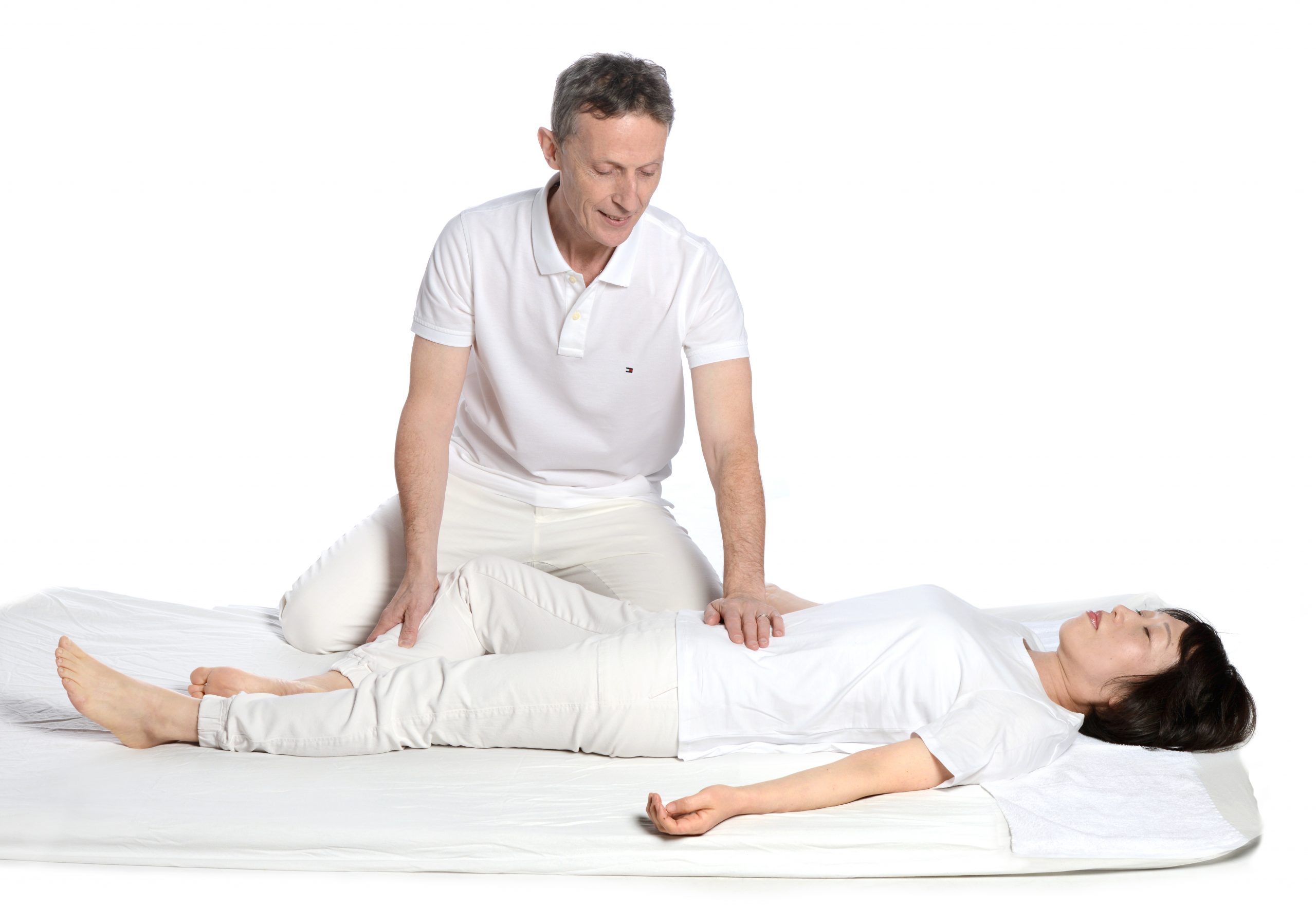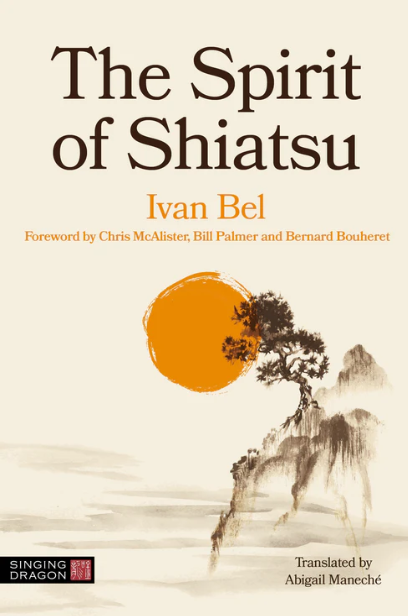Philippe Vandenabeele is one of those hard workers who have been passionate about Shiatsu for many years. Belgian by origin, he has wandered from country to country and learned many techniques. He is now ready to publish the first english version of “Ampuku Zukai”, the book by Shinsai Ota which was of major influence on the creation of Shiatsu. Teaching in Sweden, Belgium and Japan, he looks back on his career and confides in this interview. Better yet, he gives us as a gift an extract from his future book that you can download at the end of the article. Don’t miss it!
Ivan Bel: Hello Philippe. Before starting this interview, I would like to know how is your installation in Fukuoka? Is it a big change for you?
Philippe Vandenabeele: Good to see you Ivan and thank you for inviting me to do this interview. Well, Japan has always been our second home. We came mostly once or twice a year to visit my wife’s family and to study more Shiatsu with our teachers. Since 2010, we have been bringing students and organising courses in Japan so, once we settled permanently in Fukuoka, it was like coming home.
Now that you have left for Japan, you will miss the little Belgium. Can you tell me where you were born, when, in what kind of family did you grow up? How was your childhood?
Belgium and Europe will always be in my heart, and especially Oostende on the Belgian coast where I grew up. The family on my mother’s side was connected to Oostende and the sea. They were all seamen: captains and pilots of French and Dutch descent who ended up in Oostende. My father’s parents were of Italian and Flemish descent and worked in France. My grandfather was a barber and my father learned his job from his father, and later opened his own barbershop in Oostende where he met my mother who worked as a nurse. I grew up behind the barbershop that was situated close to the beach. When I was not in school or on the beach you could find me at his barbershop where I liked to help him. From the age of 10, one of my jobs was hair washing. I found it fascinating to touch all those different heads. It was as if they all told their own story. Somehow it became the basis for my fascination with bodywork.
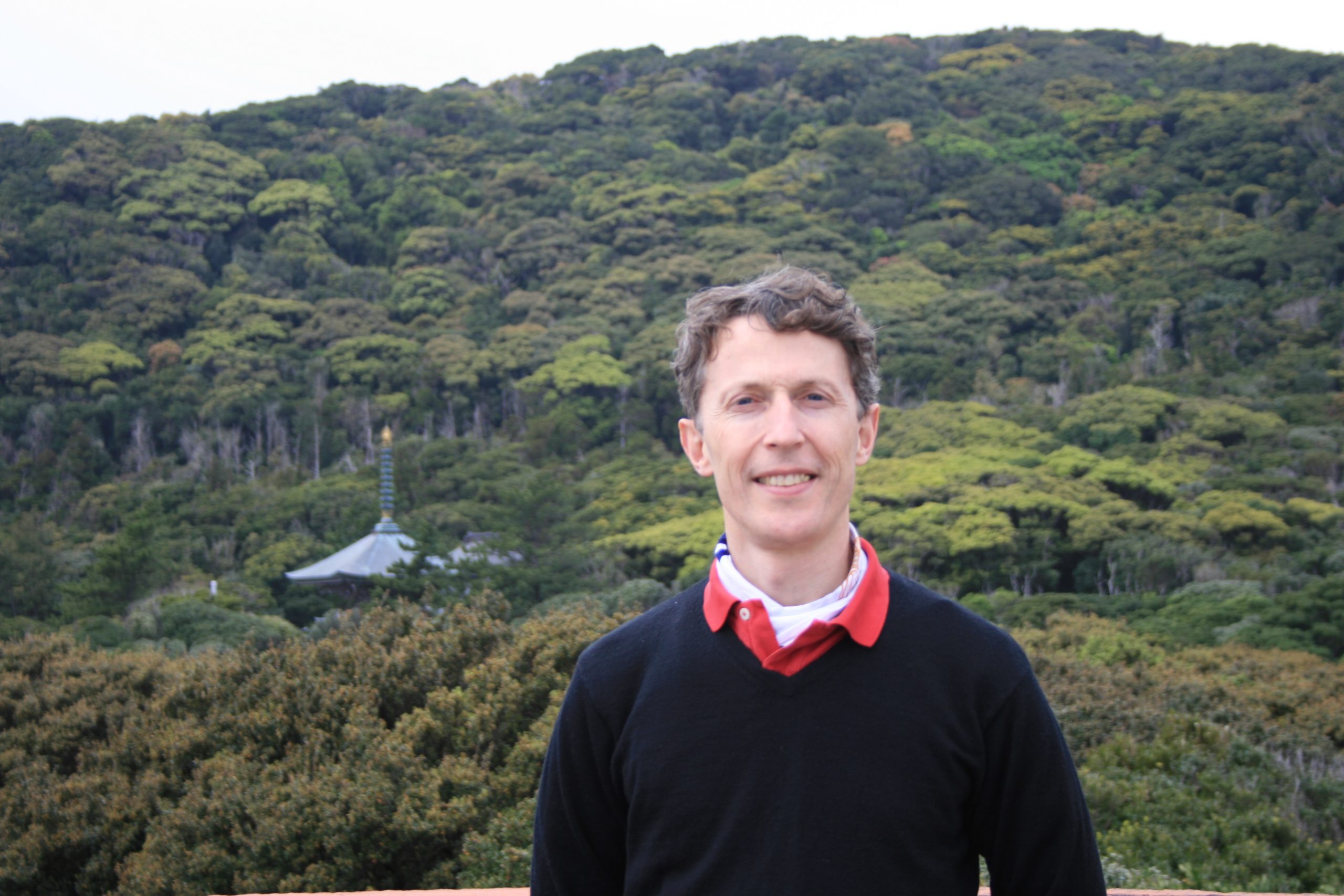
When did you start to become interested in eastern culture? Which way did you go?
As a seaman my grandfather had been to the east and his stories triggered my imagination. My father also had a connection with the east, he practiced karate and he let me read his correspondence with a Japanese acquaintance of his in Hiroshima. They wrote to each other to practice their French. The letters were about everyday things like their past, the passing of the seasons and Eastern Philosophy and so on. It was a beautiful way to get an insight into the Japanese way of life. Since a very early age I wanted to know everything I could concerning Buddhism and Daoism and my parents gave me the opportunity to buy all the books I wanted concerning eastern philosophy and culture.
At 20 years old you already have a bag on your back and you travel to Asia. Where did you go? What did you do? What did you discover? What impressed you most?
After 2 years of History of Art and Archaeology studies at the University of Gent, I realised that an academic life wasn’t really something for me. Instead, I wanted to go out into the world. I bought a ticket for India and travelled through the country, even venturing into Nepal. It was an amazing experience. I spend a month in Varanasi, went to Sarnath where the Buddha spoke his first sermon, and visited the sacred places like Bodhgaya and Rishikesh. Though I was not looking for something in particular, I just wanted to see those places I had been reading about. After 6 months in India I met my first teacher somewhere during a long day of travel by bus. This person introduced me to the practice of Vipassana meditation, Jin Shin Do acupressure and Shiatsu. It was a revelation for me. Suddenly I knew what I wanted to do with my life. After some time in the East I found myself living and studying with my teacher in a remote part of Norway, living quite isolated in a tiny wooden house in the mountains close to the elements. Later we travelled together to a meditation center in Devon in the UK where I did my first long Vipassana meditation retreat.
Who was this teacher you met in India and followed in Norway? It seemed you learned with him like a private student?
It is a practitioner/teacher from Hallingdal in Norway who is now living in Australia. Someone with a rich experience of life and with a strong connection to nature. Maybe some people could call him a healer, a mystic or a shaman? Not the kind of person you can find in a telephone book or on google as one would say today. I think as a manual therapist it is important to be open to encounter great practitioners and to see if they can become once mentor. I have had several private teachers and mentors in my career. Studying in a group or in a school is good. One can work on many different colleague students, one receives some theoretical knowledge. However, studying directly with an experienced practitioner is a whole different level of learning. To learn by observation, by just being present and to learn by receiving from an experienced practitioner has been essential for me in learning the Art of Touch.
But that wasn’t your formal training in Shiatsu, wasn’t it?
Yes, my formal Shiatsu training came later at the International Shiatsu School in Belgium and in Kienthal, Switzerland. That was when I was 25 years old. At the International Shiatsu School I had the privilege to study with Wilfried Rappenecker, Saul Goodman, Jan Vervecken and Dirk Oellibrandt. Jan and Dirk gave me the opportunity to assist them on a regular basis.
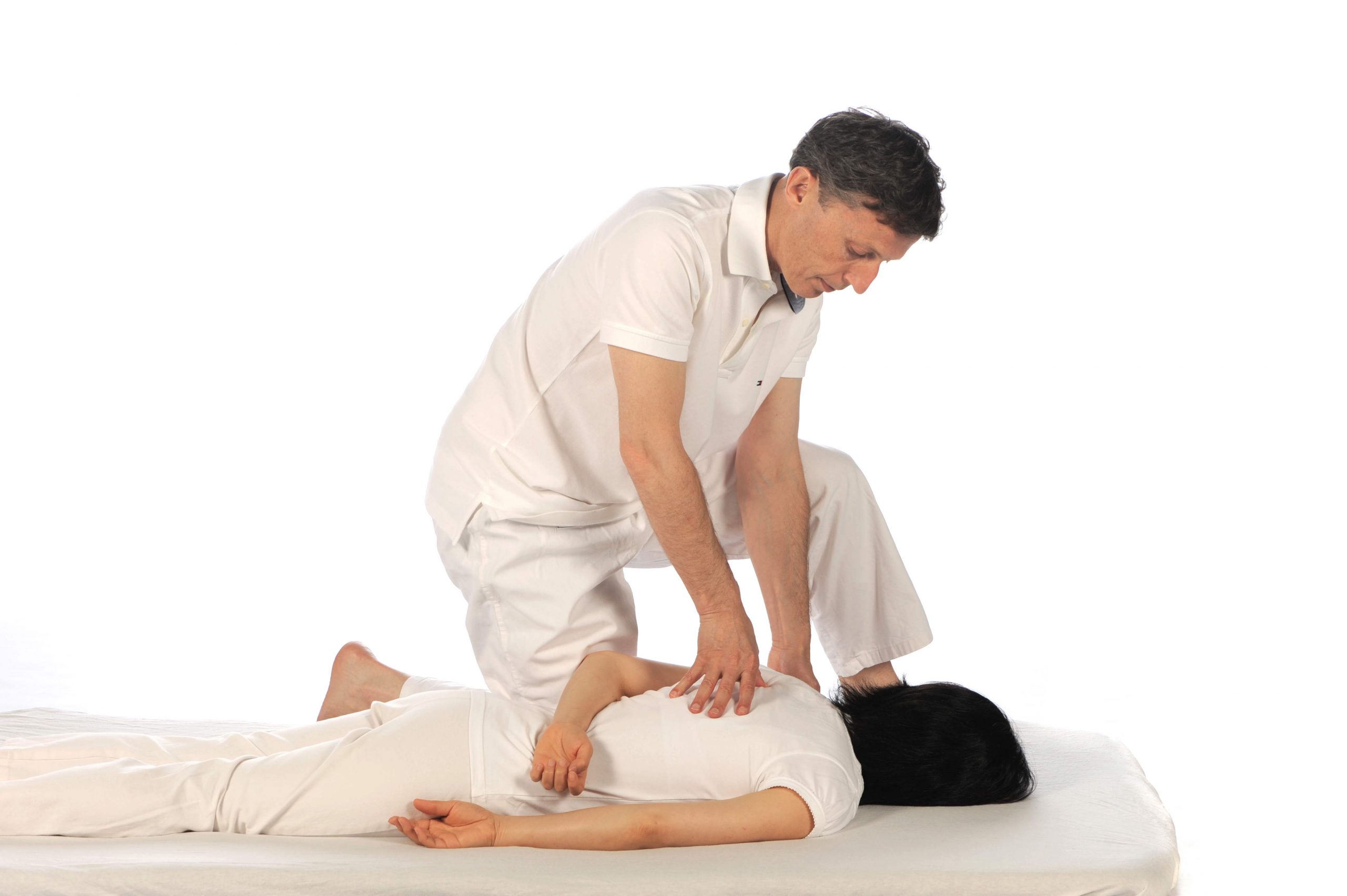
Impressive, they are all famous teachers now! But I’ve heard you were always looking for something more and that meditation is an important point in your course.
During my studies at the International Shiatsu School I felt I needed some further grounding in mediation. At that time Barry Long, the Australian spiritual master, became my teacher. He made meditation in daily modern life, with all its challenges, a reality for me. During a period of five years I followed Barry where ever he would teach, from London, Stockholm, Frankfurt, Hamburg, Amsterdam, Eindhoven, even twice to Sydney, Brisbane and longer periods in the Byron Bay area (ed. South of New-Galles, Australia). It was after an intensive retreat with Barry, on my way back from Australia, that I spend 6 moths in Thailand studying the traditional massage of that country. For me Thai traditional massage became an integral part of my Shiatsu and I since then returned several times to Thailand to learn more from my teachers.
When you started as a practitioner, what problems did you encounter in your early days?
In the beginning, I found it difficult to understand the theory and I had a hard time remembering where the meridians where. It took me really a long time to grasp what I was doing (laughs). It was only later when I travelled to Japan and met some great practitioners that all this started to make sense. Also, studying the Classics of Chinese medicine has helped me to gain confidence in our Art.
Why did you leave for Sweden?
I was invited to teach in Finland and took the opportunity to take some further education in Stockholm at Axelssons, the biggest massage institute in Scandinavia. It was during my stay there that I saw a poster that Dirk Oellibrandt, from the International Shiatsu School, would come to Sweden a few weeks later to teach the whole postgraduate Shin Tai education. I immediately signed up for the program. It was the last time Dirk was teaching Shin Tai before starting his own ‘Du Mai’ school. He asked me to become part of his teacher’s team and later the director for ‘Du Mai’ in Sweden. During these 12 years I had a practice in Sweden. Thanks to Dirk’s many connections I was able to invite teachers like Mantak Chia, Henny Eleonora, Franz Deprez, Hilde Verhulst and Helga Wohlmutter to Sweden. The Belgian osteopath Helga Wohlmutter gave an amazing Chi Nei Tsang education in our school. Here subtle and profound work has inspired me a lot and has helped me to see the abdominal work in a whole different way.
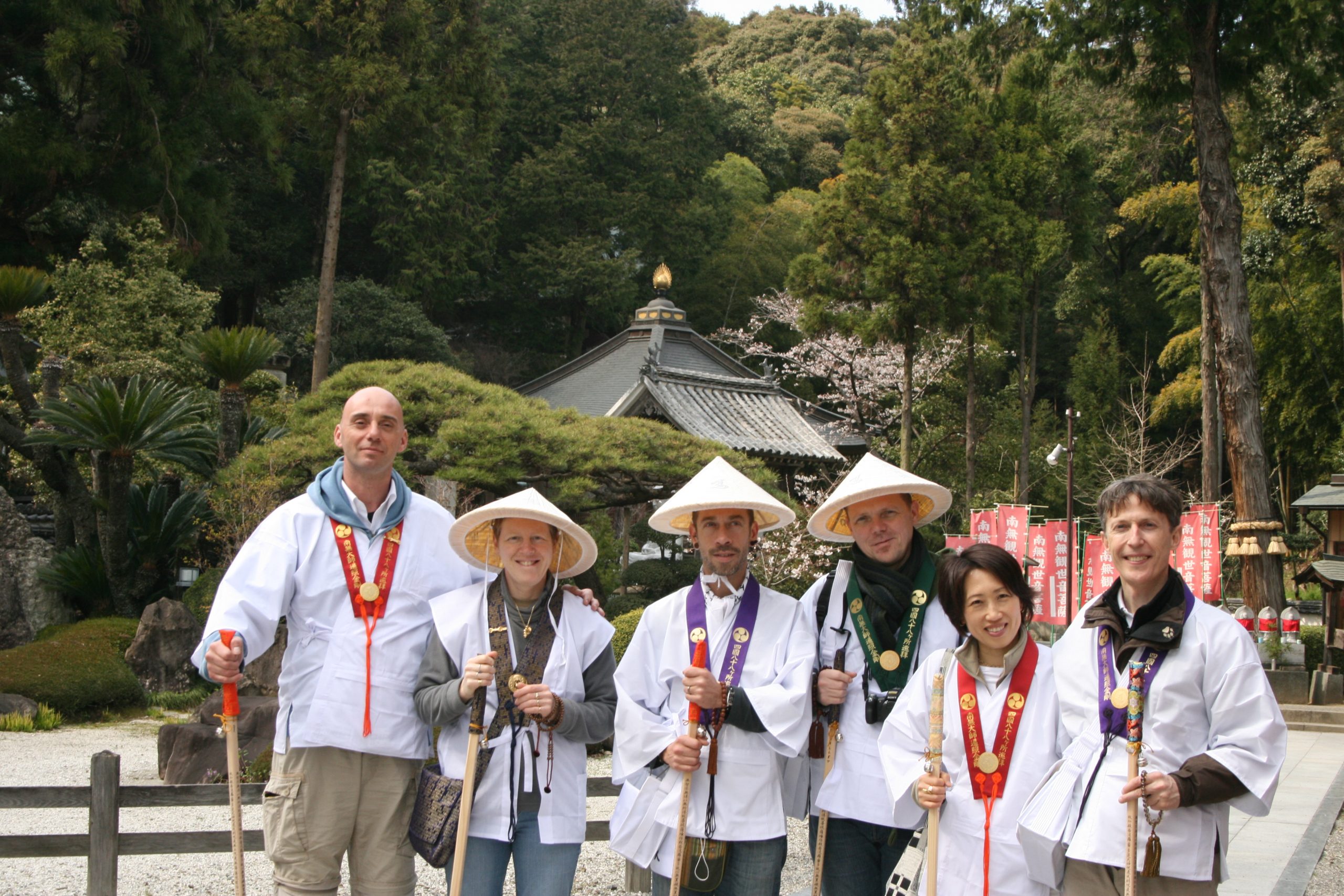
Just to be sure, in what language did you teach? Did you speak Swedish?
I learned Swedish from my students and patients. But, luckily for me, most Swedes also speak very good English, so in the beginning that was helpful.
What did you learn in Sweden about Shiatsu? Does the climate play in the distribution of energies or pathologies?
In Sweden, about half of my patients were doctors or nurses. In Scandinavia, I experienced a greater openness from the western medical profession towards non-western medicine. Due to the climate and culture I encountered different pathologies. For example, it was the first time I encountered so many problems related to addiction, especially problems with alcohol addiction.
I imagine that with your wife you made several trips to Japan. Did you continue to train in Shiatsu up there?
Hiroko, my wife, had studied at the ‘Iokai’ school with Haruhiko Masunaga (ed. the son of Shizuto Masunaga), so it was natural for me to join her whenever I could. We continued to study when we came to Japan and we even invited Haruhiko Masunaga to our school in Brussels. In Japan, I attended many classes where I was the only westerner. Japanese are very dedicated students. Learning by imitation is one of the great strengths of their culture. They are not used to ask questions before they have practiced a lot. In the west when a class is over everyone tends to go home. However, in Japan after class they sit together and practice the techniques they learned during class. They help each other through practice when the teacher has left.
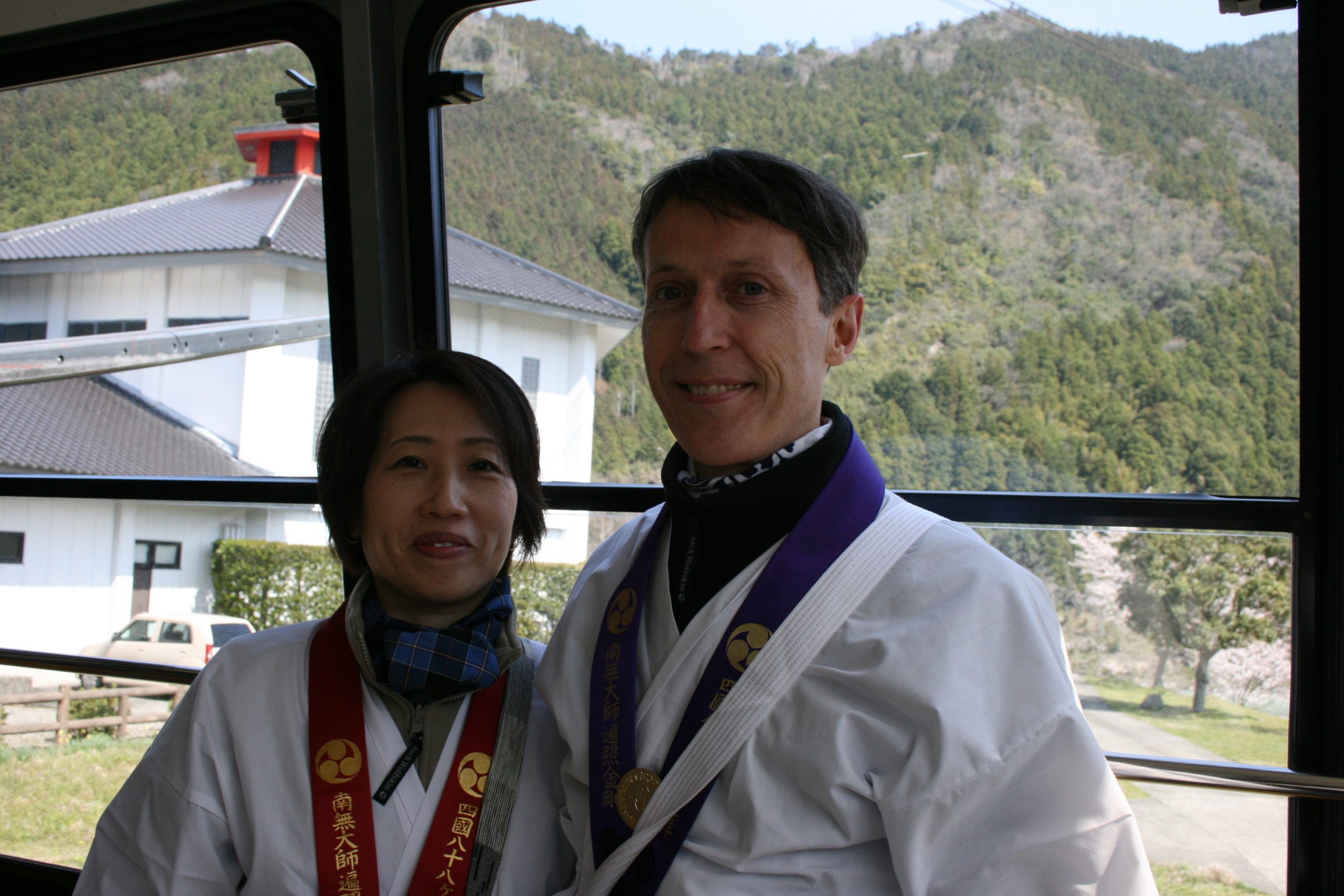
Like many practitioners now, you have chosen to study Chinese medicine. Can you tell us about your studies and tell us why you made this choice? Has that allowed you to progress in Shiatsu?
While I was learning Chinese Medicine I was also looking for a way to broaden my theoretical base. At the same time, I wanted to come away from the macrobiotic yin and yang theory and the New Age theories that I had met during my studies in the west. I wanted to study in China and Japan to learn from the source. I think this has helped me to gain more confidence when teaching and practicing Shiatsu.
In 2006 you returned to Brussels to open Shinzui Shiatsu School with your wife. At that time, did your teaching change from your beginnings? Have you made a fusion of what you have learned and discovered?
I was still at a point in my life where I wanted to build a strong Shiatsu School. Something very practical and down to earth and with the aim to deliver good practitioners. When I look back I can see that the fusion of what I had learned was on it’s way. Maybe one could say that it still was in it’s embryological stage? Maybe when I will be looking back in 10 year’s time from now, I will be saying the same about where I am now (laughs). It is a work in progress.
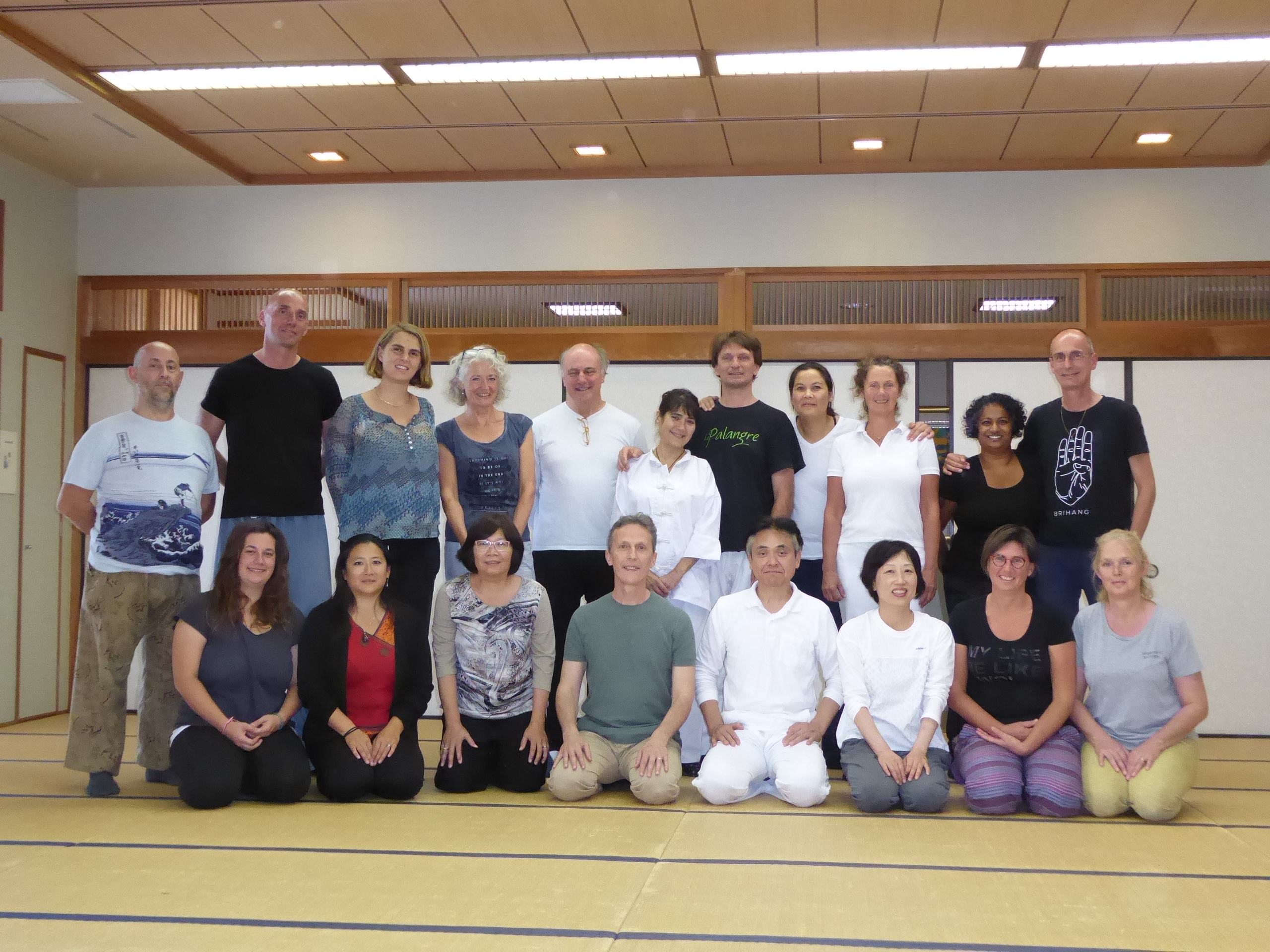
You are not only a teacher of Shiatsu, but also an enthusiast of Japanese culture, am I wrong? Do you find bridges, links, between the different Japanese cultural aspects and Shiatsu?
Sure, I love to learn while being in Japan. I have a great respect for its ancient culture. There is still so much I discover every day simply by being here. The apparent simplicity of Shiatsu together with its great depth, clarity, refinement and meditativeness are typical Japanese aspects of the Art of Shiatsu. One can only be immensely grateful to be part of such a great tradition.
Now you are preparing the publication of the English translation of Ampuku Zukai, the book of Shinsai Ota. Why this book rather than another?
I first read about the historical importance of the Ampuku Zukai for Shiatsu in the books of Masunaga and then the books from Stephen Birch and Kiiko Matsumoto (1). What interested me immensely was the fact that this was a book where techniques for abdominal work where described. I had already learned Chi Nei Tsang from Mrs. Khun Ni and from Mantak Chia in Chiang Mai (ed.: city in the North of Thailand) and had incorporated those techniques in my Shiatsu. But I wanted to know more about the abdominal work in the Shiatsu tradition.

To realize this, I first looked for experts to help me to get the Ampuku Zukai translated. That project was finished in 2017. During the translation process and with my research into the origins of Ampuku, I accumulated more material and gained some more insight into the history of Ampuku. I decided not only to focus on the Ampuku Zukai but to share other materials I had found. It is my wish that the book will provide readers with a better understanding of Ampuku.
I’m so happy you’ve made this important work for the Shiatsu community. How was this organized? With whom did you lead this project? What were the difficulties in translating this book?
It took many years before I found scholars who understood Edo period Japanese and were prepared to help with the translation of the Ampuku Zukai. The book has been a team effort and we will be happy to finally get the book published by around September 2020 if all goes well. It will be presented at the European Shiatsu Congress in Amsterdam.
Can’t wait to read it! But concretely, what can this book bring to Shiatsu practitioners?
I believe it will give more insight into the History of Shiatsu and give us the opportunity to learn more about those important abdominal techniques. As a Shiatsu practitioner it is vital to be able to work more profoundly and free the Hara. Abdominal work has helped me to raise the effectiveness of my treatments, and I wish they should become an essential part of every manual therapy practice.
I completely agree with you. Can you make us the exclusivity of a small extract with a picture?
Yes, it would be my pleasure. Perhaps you could even add an excerpt of the book along with this interview? (ed. see at the end)
Let’s go back to Shiatsu. Today diseases seem to multiply in our Western societies? In your opinion, why? Can Shiatsu help fight these problems?
I believe that one of our main problems is our separation from nature: our separation from mother earth and our separation from our own nature, from our own body. Shiatsu has a lot to give to our modern times in that respect. I am happy to see a growing awareness of the effectiveness of bodywork and the growing success of our practices. More people seem to be finding their way to Shiatsu and other bodywork practices. To come back to the Ampuku Zukai and abdominal work, there is a growing awareness of the importance of the abdomen (or our “second brain”) for our overall wellbeing.
I remember a discussion we had a couple of years ago about the electro sensitivity phenomenon? You said it could be fixed via Shiatsu. Can you describe this problem in terms of energy disorders or pathological picture? What is happening to these patients?
Well, I have seen the effectiveness of our treatments with this problem. I encountered Electro sensitivity (or allergy to electricity) often in my practice in Sweden. In most cases there was a ‘Kyo of the Spleen’, sometimes in combination with a Kyo in the water phase. What I saw in my practice was that most of the people who come to see me with this problem where very mentally active. When the Spleen was involved, such problems need quite some time to heal and the person has to be willing to change by letting go of some bad habits.
What are your plans for the future? Will you set up a school or clinic in Fukuoka?
We now have a school and a clinic in Fukuoka!
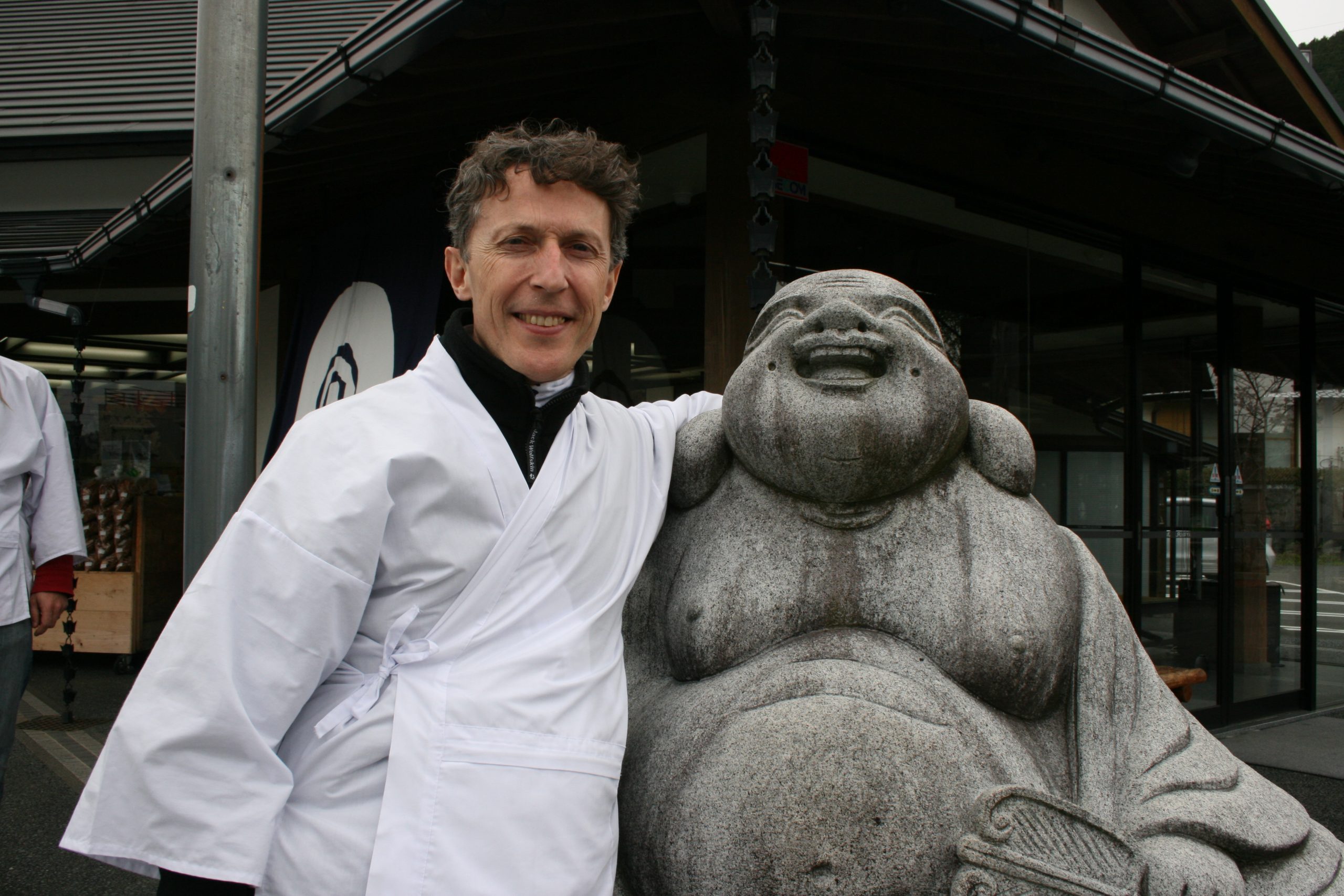
Wow, that’s amazing! Already?
Yes! (laughs) In my treatments and teaching I combine the eastern and western techniques that I have learned over the years, I call it Shinzui Bodywork. The different ways to work with the body, being it eastern or western are now fused together in my own bodywork practice. My aim is to keep my work firmly grounded within an eastern framework integrated with a western anatomical approach. For example, by using the techniques I learned from the French osteopath Jean-Pierre Barral, I was able to understand, feel and evaluate the mobility and the motility of the inner organs. This has become an integral part of my bodywork practice in combination with Shiatsu meridian work. For me there were no longer two different ways of looking at the body but rather, after 30 years of study and diligent work, the eastern and the western ways have merged into one.
Finally, what would you recommend to Shiatsu students who want to become professional?
Work hard, enjoy learning and never give up; rewards will always come over time.
Thank you very much for you time and hope to see you in Amsterdam for next European Shiatsu Congress
My pleasure!
Notes:
(1) Stephen Birch and Kiiko Matsumoto are the authors of the famous book “Hara Diagnosis: Reflections on the Sea“, Paradigm Publications; 1st Edition edition (June 1, 1988)
Book:
- “AMPUKU Abdominal Acupressure: THE CLASSICS AT THE HEART OF JAPANESE BODYWORK”, Philippe Vandenabeele, Authorhouse, 2020
Download:
- A Milestone: The 2025 ESF Symposium in Brussels - 24 March 2025
- Austria – 19-21 Sept. 25: Shiatsu Summit in Vienna – chronic fatigue, burnout & depression - 19 December 2024
- Terésa Hadland interview: Shiatsu at core - 25 November 2024
- Book review: “Another self” by Cindy Engel - 30 September 2024
- Austria – 24-26 Oct. 25: Master Class in Vienna – Shiatsu and martial arts - 20 August 2024
- France – Lembrun Summer Intensive Course – July 6 to 12, 2025: Digestive System Disorders, Advanced Organ Anatomy, and Nutrition - 4 August 2024
